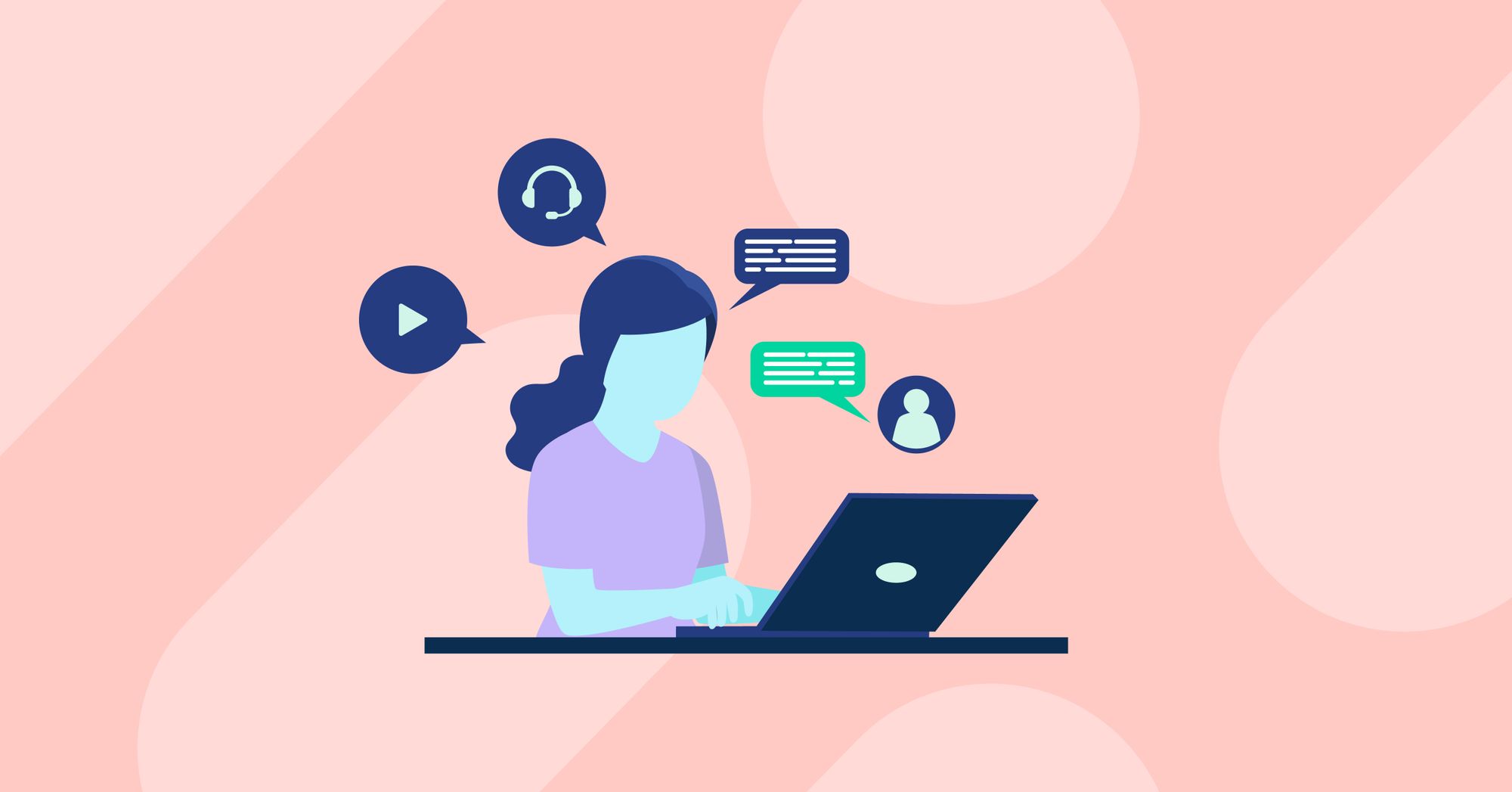Self-service equals a better customer experience and improved operational excellence. It minimizes friction by proactively offering the information customers need at their convenience. Not just that, self-service also saves your agents the time and effort spent on answering the same questions over and over again.
74% of respondents in a Gartner survey* consider customer self-service channels essential to their CX.
But here’s the catch: not all self-service tools are made equal. Choosing the ideal tool that fits your requirements and budget is a lengthy—and often overwhelming—process. With this extensive guide, we simplify the choice for you.
Below you’ll find:
- What to look for in a customer self-service software
- 9 customer self-service software tools to include in your tech stack
- 4 benefits of using customer self-service tools
Ready to empower your customers to self-solve issues and achieve success on their own?
Get a demo
What to look for in a customer self-service software
A robust self-service portal gives potential customers the confidence to resolve any concerns quickly. It also eliminates the need for users to raise a ticket or wait to connect with a support agent—removing friction and frustration from their experience.
But your choice of a self-service tool plays a crucial role in realizing these benefits. Here are the most important parameters for choosing the best customer self-service software:
Seamless customer experience should be your priority
Think of your self-serve support channel as a part of the product experience rather than an extension. This ensures that you make a self-serve support portal as accessible and engaging as the actual product.
At Stonly, we believe in delivering seamless self-serve experiences through the PEACH method:
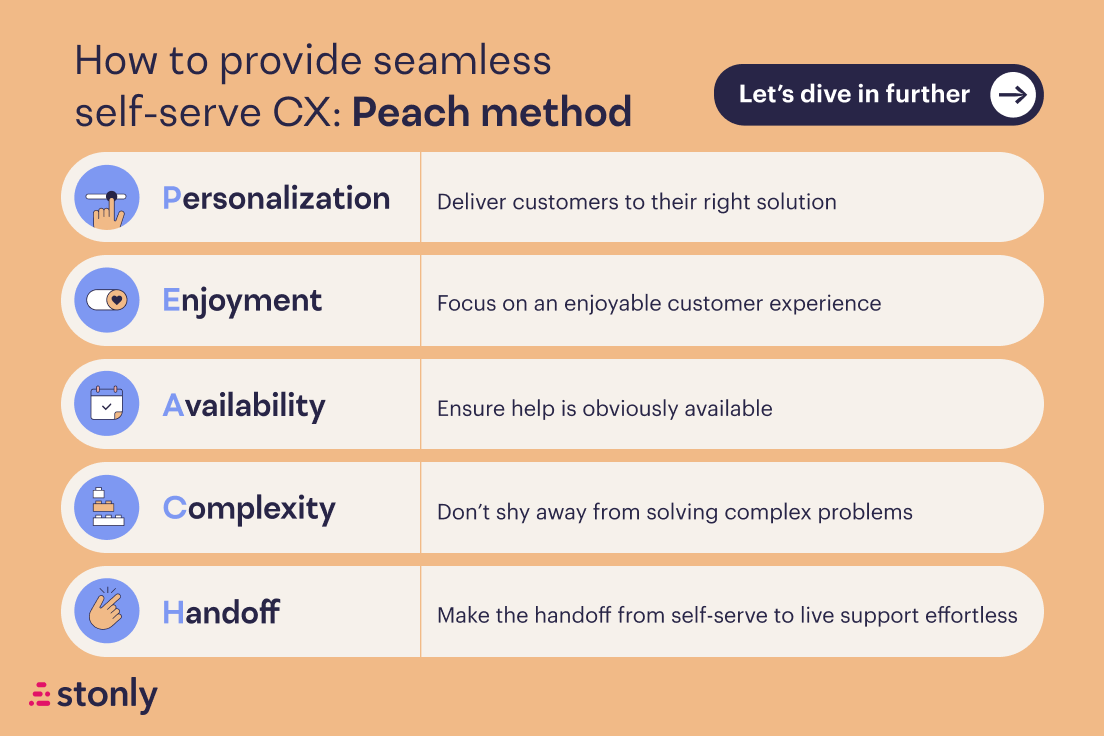
Powerful search engine for convenient knowledge discovery
A good customer self-service support tool should have a powerful search engine function. This would organize all information to help users find answers and solutions with a single search, thus functioning like an online help desk. The ease of search enhances the user experience by eliminating the need to find the correct information from predefined categories.
Ease of setup and collaboration for quick adoption
On top of the customer experience, you should also consider the ease of using the tools on the backend. Look at every tool from an inside-out perspective—how it would enable your team to capture, organize, distribute, and manage information.
The tool collaboration capabilities are also crucial because multiple roles are involved in creating and maintaining a self-serve portal.
Good analytics and insights for performance tracking
Creating self-serve support is not a one-and-done process. You must consistently review and monitor your support center to better align it with users' needs. This is where performance analytics plays a crucial role.
Your self-service tools should have reporting features like:
- Customer satisfaction level
- Common customer requests & categories
- Places customers are getting stuck
- Time to response and resolution
- Most frequently visited pages
These analytics will give you a clear picture of what customers want and how well your support center meets their expectations.
Integrations and automation capabilities for airtight workflows
Most teams want to integrate the self-support software into their existing setup, including the CRM, website, or communication tools. Adding the tool to your current setup can deliver a consistent customer experience across all touchpoints.
For example, with Stonly, if a customer seeks out information via a self-serve guide, but is unable to solve their problem, they can easily reach out to an agent via the contact form. Once they are connected, the agent already knows their issue, information, and the steps they tried to solve it through Stonly's Zendesk integration. This reduces the need for customers to repeat themselves and find quick solutions to any problem.
9 customer self-service software to include in your tech stack
Customer self-service is a complete spectrum of tools. Each tool offers customers a unique way of finding answers and resolving queries.
As a business, you can choose a single tool or work with a combination of tools to offer self-serve support. We've done the legwork to give you a list of the nine types of customer service software tools you can consider—with our recommendations of the best tools.
Knowledge base
A knowledge base is a library of all product-related information. It becomes a single source of truth that empowers users to solve any problems by themselves.
A good KB software should:
- Have a search functionality showing the most relevant results for any query
- Display related content to give customers more context into their problem and promote better product adoption
- Offer site-wide access through widgets, especially at places where customers commonly struggle
- Give an option to connect with an agent if the information didn't solve their query
A knowledge base can deliver information in different formats, like Q&As, videos, step-by-step guides, illustrations, and downloadable assets.
Stonly
Stonly enables you to create a laser-focused and interactive knowledge base to extend the best possible help to your customers. It replaces the old style of knowledge bases that came with vague information, unhelpful search, and lack of accessibility.
Instead, you can meet customers where they are and offer actionable solutions to their specific issues with Stonly.
Leverage the search capabilities of a Stonly KB to make relevant help easy to find, and empower customers to self-serve. You can also embed Stonly into your site directly or via the widget to provide your help content in the context where it’s actually needed.
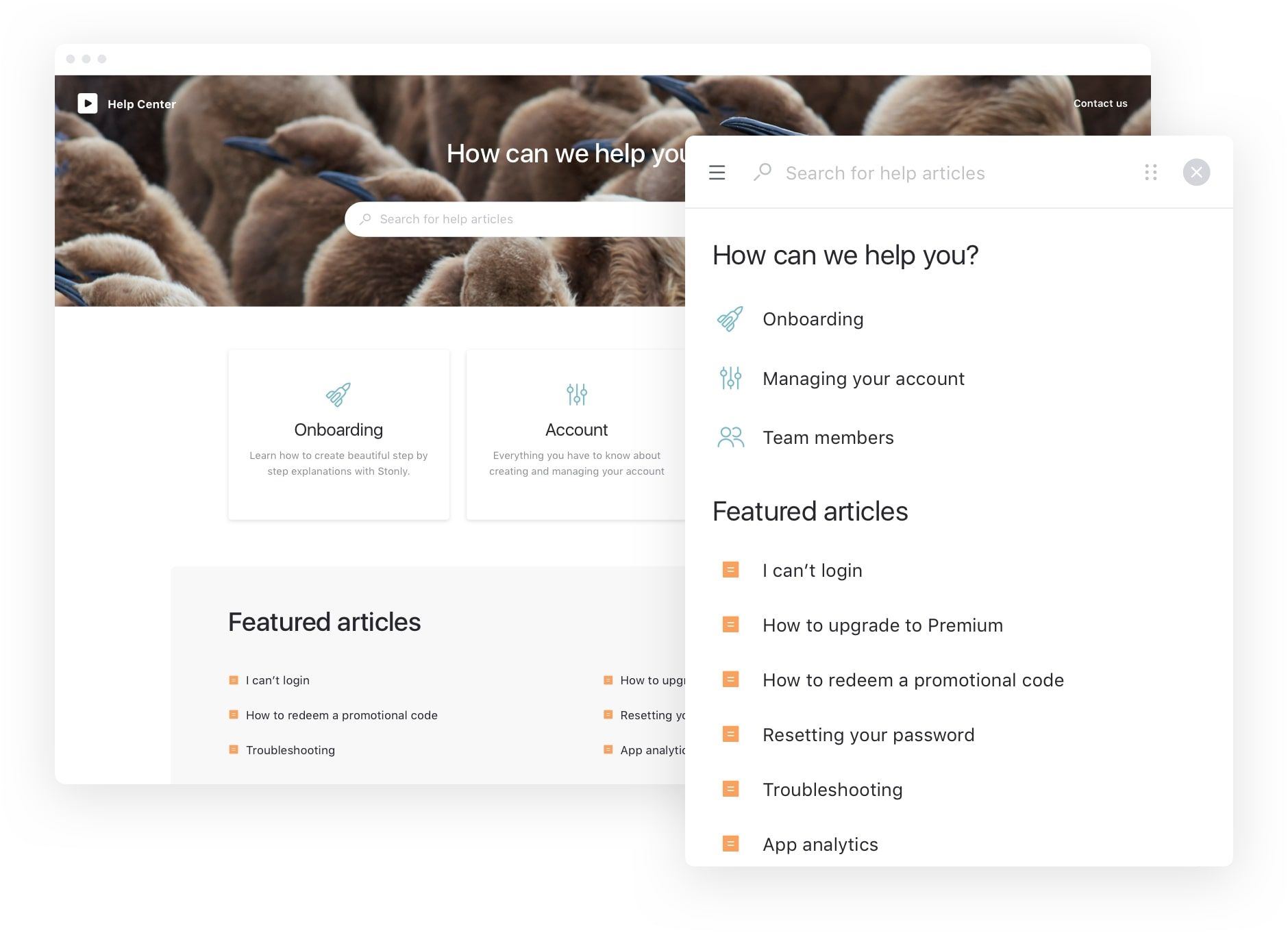
Document360
Document360 is a knowledge base software for creating internal and public self-service portals. An intuitive interface supports Markdown and WYSIWYG editors, allowing teams to create content efficiently. You can enhance articles with images and videos and even customize the homepage to align with your brand guidelines, making your knowledge base a seamless extension of your website.
With AI-powered search capabilities, the platform provides instant and accurate results, enhancing self-service capabilities. Eddy, the advanced AI assistant, helps streamline content creation and management, enabling faster response times and personalized support. Document360 platform supports the creation of multilingual content in more than 30 languages and integrates seamlessly with translation tools such as Crowdin and Phrase. Additionally, it integrates with popular tools such as Zendesk, Freshdesk, Microsoft Teams, and Slack. Features like role-based access, article reviews, and collaboration tools make it a favorite among authors and content managers.
Using Document360, businesses can create professional, self-service knowledge bases for customers and support agents. Having 24/7 access to resources reduces repetitive queries and reduces support tickets, allowing support teams to focus on solving complex problems. Whether you need a simple FAQ page or a comprehensive user manual, Document360 provides a scalable solution.
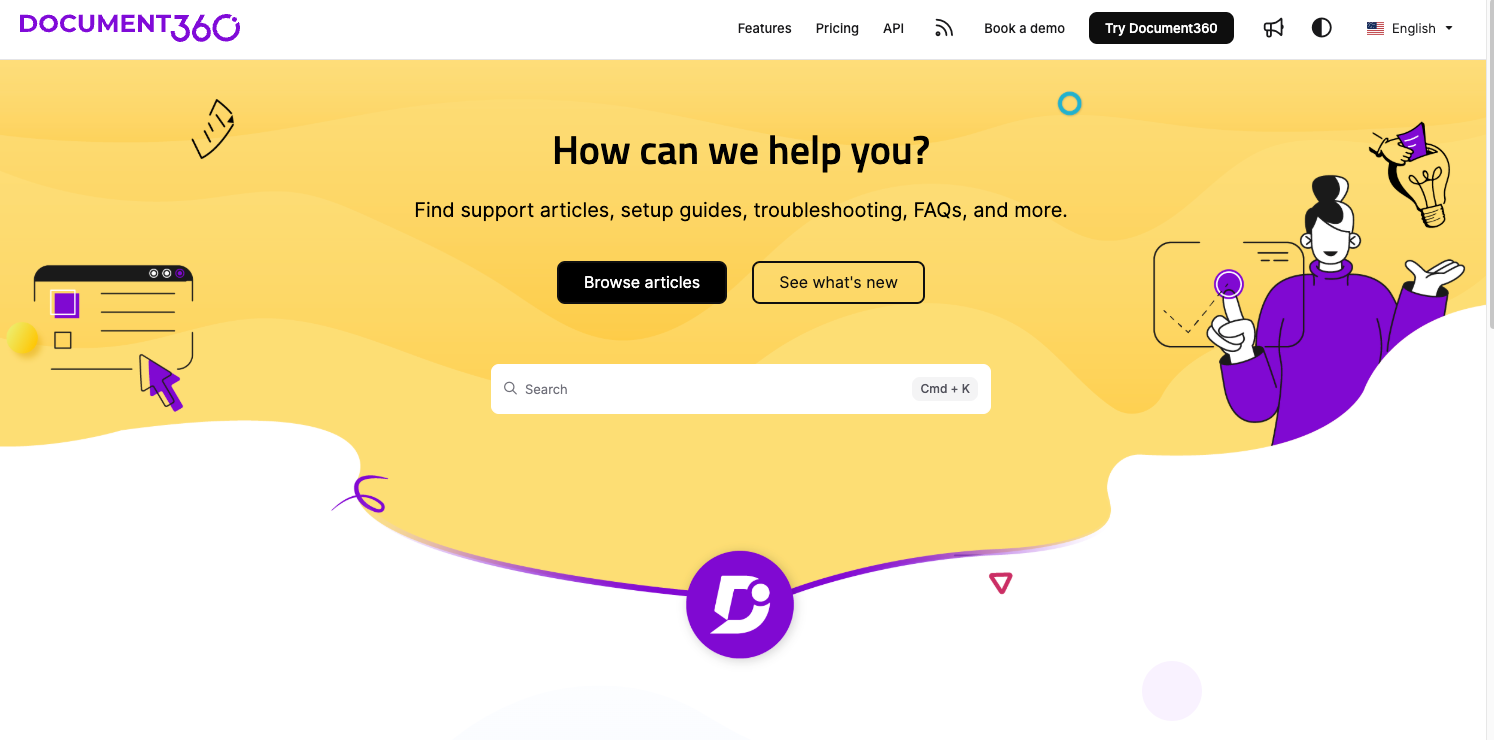
HubSpot
HubSpot's Service Hub enhances customer service by streamlining support processes and improving customer satisfaction. It empowers teams to efficiently manage and resolve customer inquiries, ensuring faster response times.
The tool enables 24/7 assistance with AI-driven solutions, reducing the workload on support staff. By offering a self-service knowledge base, it minimizes the number of support requests, allowing customers to find solutions independently.
Furthermore, the platform supports seamless communication across multiple channels, ensuring consistent and personalized interactions. HubSpot's Service Hub boosts team productivity and enhances the customer experience through efficient service management.
Zendesk
Zendesk has a good self-serve solution to create a value-packed knowledge base. The tool analyzes your support tickets to present AI-powered content recommendations for expanding and improving your knowledge base. You also get cues to understand customer preferences for your content, like which knowledge base articles serve their needs and which don’t.
What's more, Zendesk comes with automation capabilities to create streamlined workflows. You get an agent workspace for easy collaboration and robust reporting features to constantly monitor your KB's performance.
But here’s the best part: you can level up your content on Zendesk by embedding interactive guides created on Stonly. Minimize the number of support tickets by creating these detailed and engaging guides for your highest volume issues to speed up customer resolution times and improve CSAT.
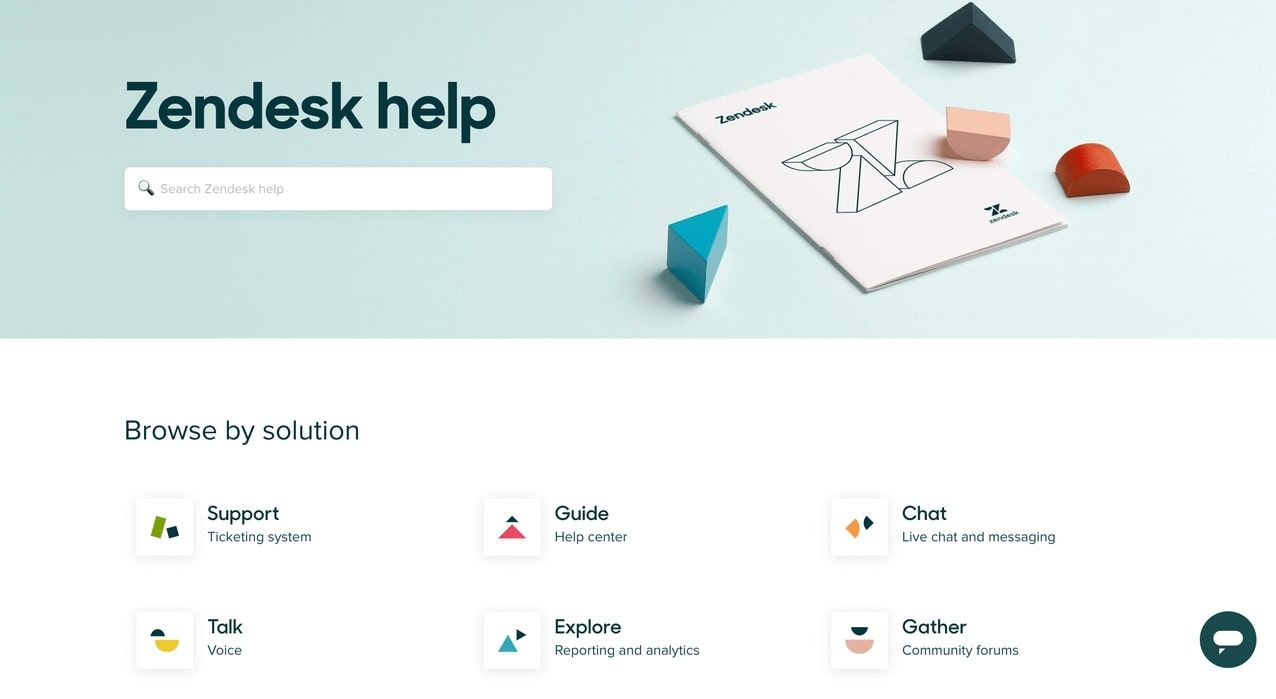
Knowmax
Knowmax is a knowledge management system that transforms the idea of knowledge management and highlights how it keeps everything curated without much effort.
Knowmax serves as a promising self-service platform with a power-packed feature set. With their knowledge base, you can easily manage your documents hassle-free. They also bring dynamic decision trees, visual guides to make self-service more interactive and easier, Articles and FAQs for instant answers, LMS for agents, and easy integrations with various other platforms.
Their self-service is accustomed to multiple channels, like contact centers, web, apps, chatbots, and RPA, retail, field, and many more for seamless communication.
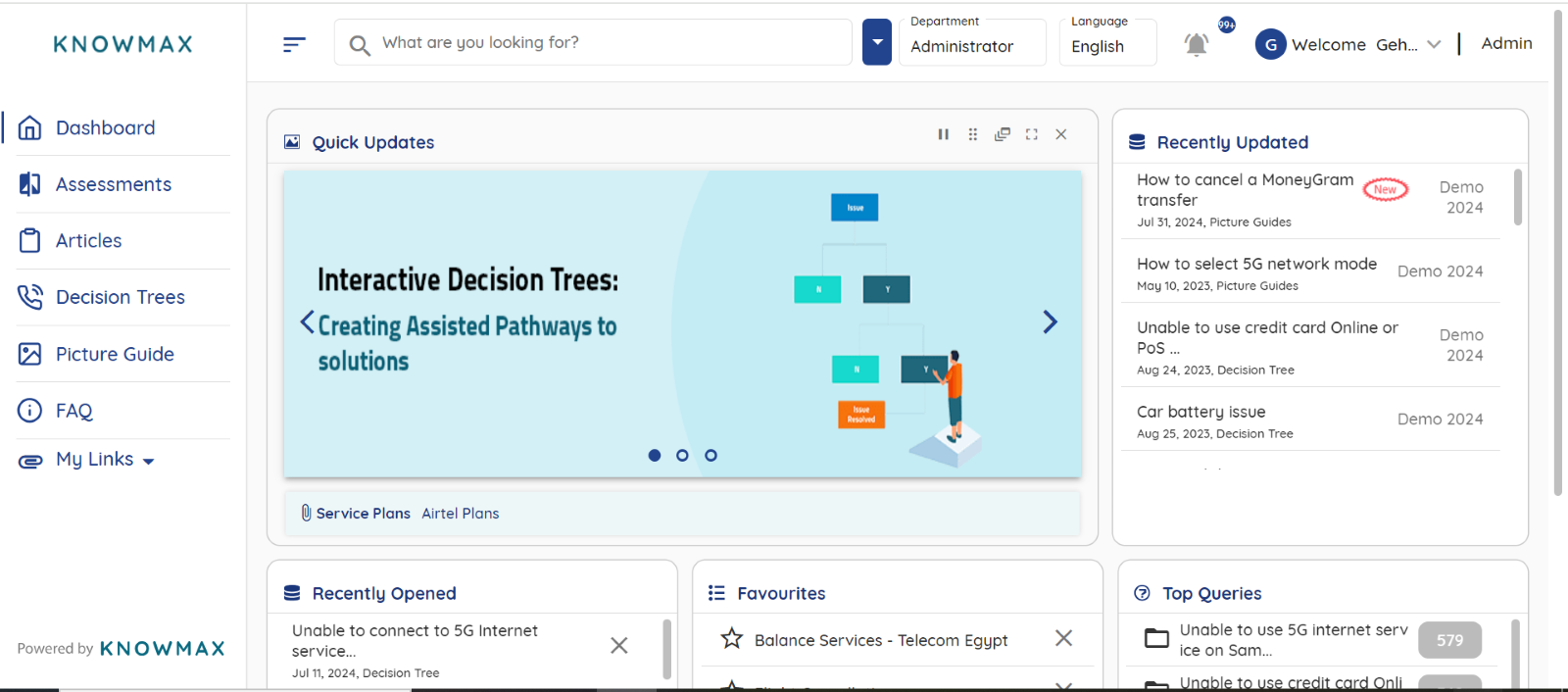
Interactive guidance
Contrary to what people believe, self-serve support doesn't have to be limited to static content. Customers expect more interactive and guided content to help them get more out of your product. Interactive guidance tools present more dynamic solutions to any question or query. This can include on-screen product walkthroughs, videos, or audio to solve a customer's concern.
Stonly
With Stonly, you can provide a seamless customer experience by creating interactive guides that get to the core of a customer’s query and lead them to the best solution .
Create step-by-step guides to maximize reader engagement. You can customize your KB to match your brand's look and feel and create a more consistent user experience. Besides its UI capabilities, Stonly delivers help right when needed with its widgets anywhere on the app or website.
Rather than uploading static answers to a handful of questions users might have, you can make multiple paths to a question and outline different solutions in every path. So, when the user is looking for an answer, they can answer the prompts to clarify their intent, and Stonly will guide them to the right path.
These interactive guides allow you to personalize customer experiences and provide more contextual help. Plus, you can qualify every support ticket to route them to the right person if a customer needs to contact you directly.
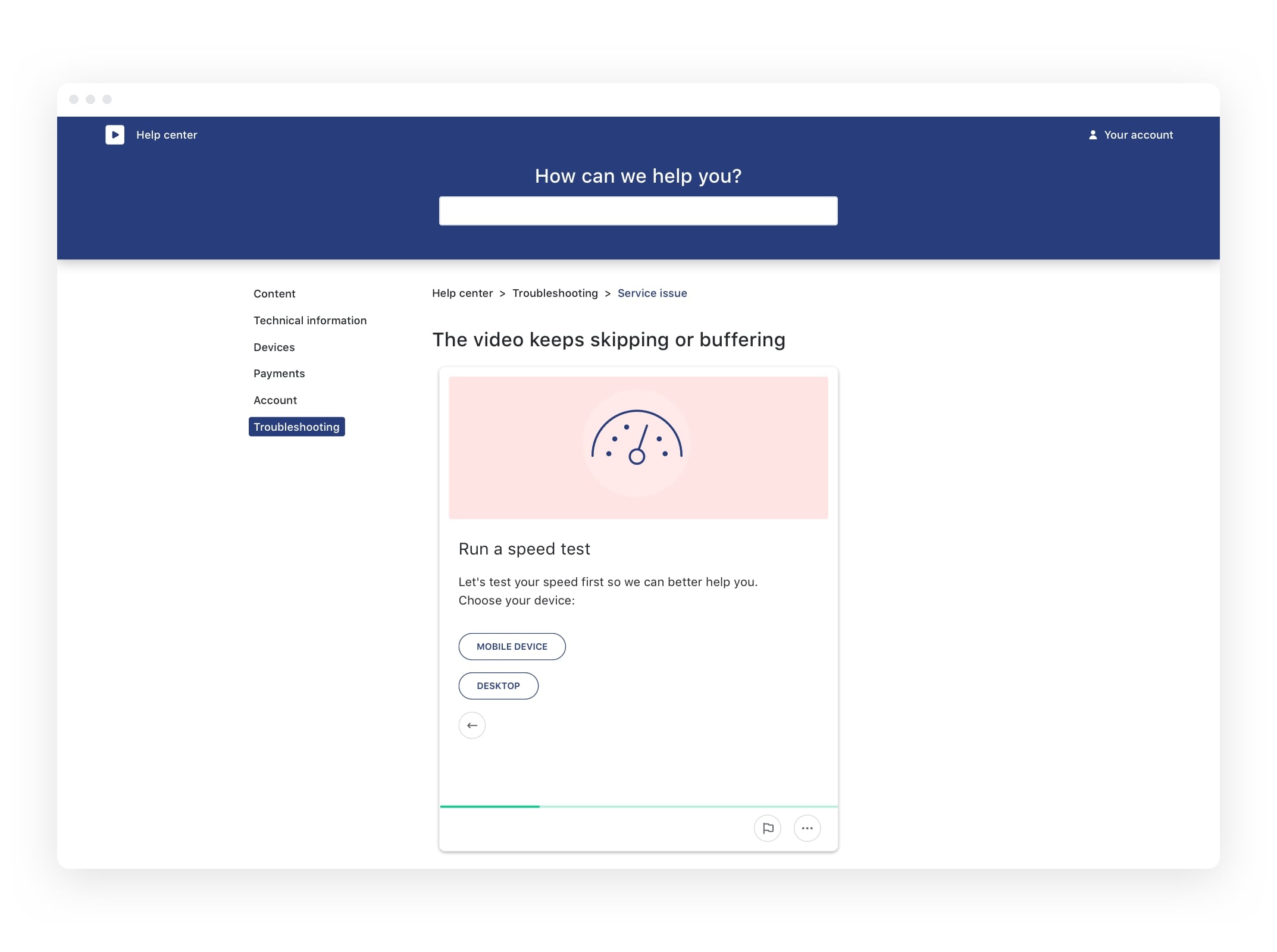
Video
Video is also a popular format for self-service support. Some people are more inclined to watch videos to solve problems because they are more audio/visual learners.
Teams can create short, crisp video guides or tutorials to answer the most frequently asked questions. A video recording tool can also come in handy for developing a video-driven knowledge base.
Loom
Loom is a great choice to add videos to your self-serve content mix. You can effortlessly create short and long videos depending on the topic and embed them within your support center. The tool lets you customize all the content per your branding with the option to add calls to action anywhere.
What’s more, it has powerful collaboration features. So, you can collect feedback from your internal experts, add contextual comments anywhere in the video, and communicate via comments.
Lastly, Loom shows customer engagement insights for every video to tell you which customers viewed the most and which were not doing great.
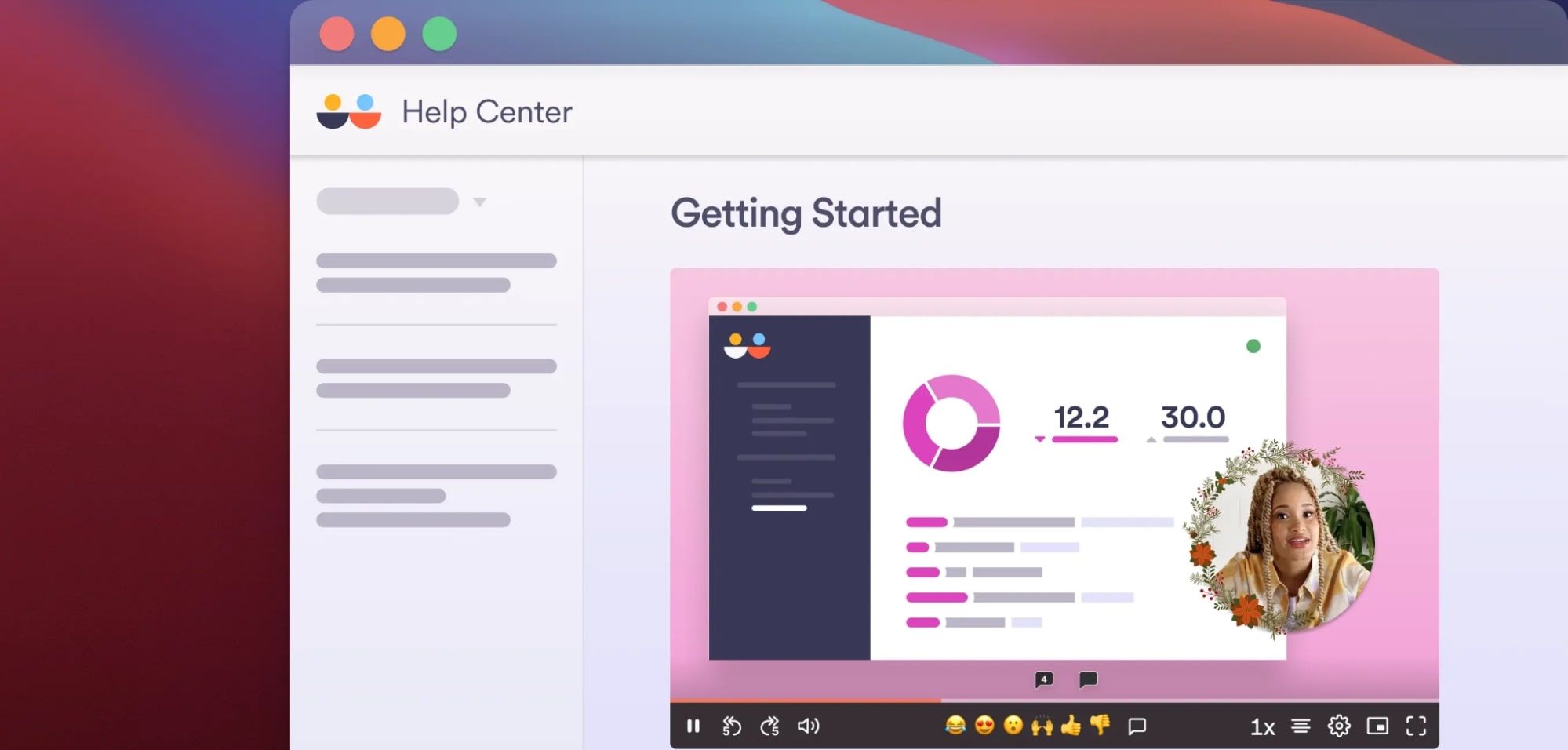
Wistia
Wistia is a video creation software with recording, editing, and hosting capabilities. You can use Wistia to create different types of video content, like FAQ pages, explainers, live-action bumpers, and more.
You can record your screen in two easy steps and edit it directly from the tool. The hosting solution ensures that your videos are published on a custom player and embedded anywhere on your website.

Chatbot
Chatbots are trained to find the most relevant information stored in knowledge bases or help centers to answer a query.
It’s important to note that too much customer support automation can derail your self-serve support experience by making it too artificial for your customers. Instead of relying solely on chatbots, you can use Stonly’s interactive guides to offer 24/7 support tailored to users’ needs and queries.
Ada
Ada is a brand interaction platform that provides an instant, self-serve channel through chatbots. Their powerful chatbot is available 24/7 in over 100 languages, following an omnichannel approach.
The tool processes customers' interests and intent to provide the most specific information for their queries. It also gives customers quick access to your support agents for more unique queries that your knowledge base content can't solve.
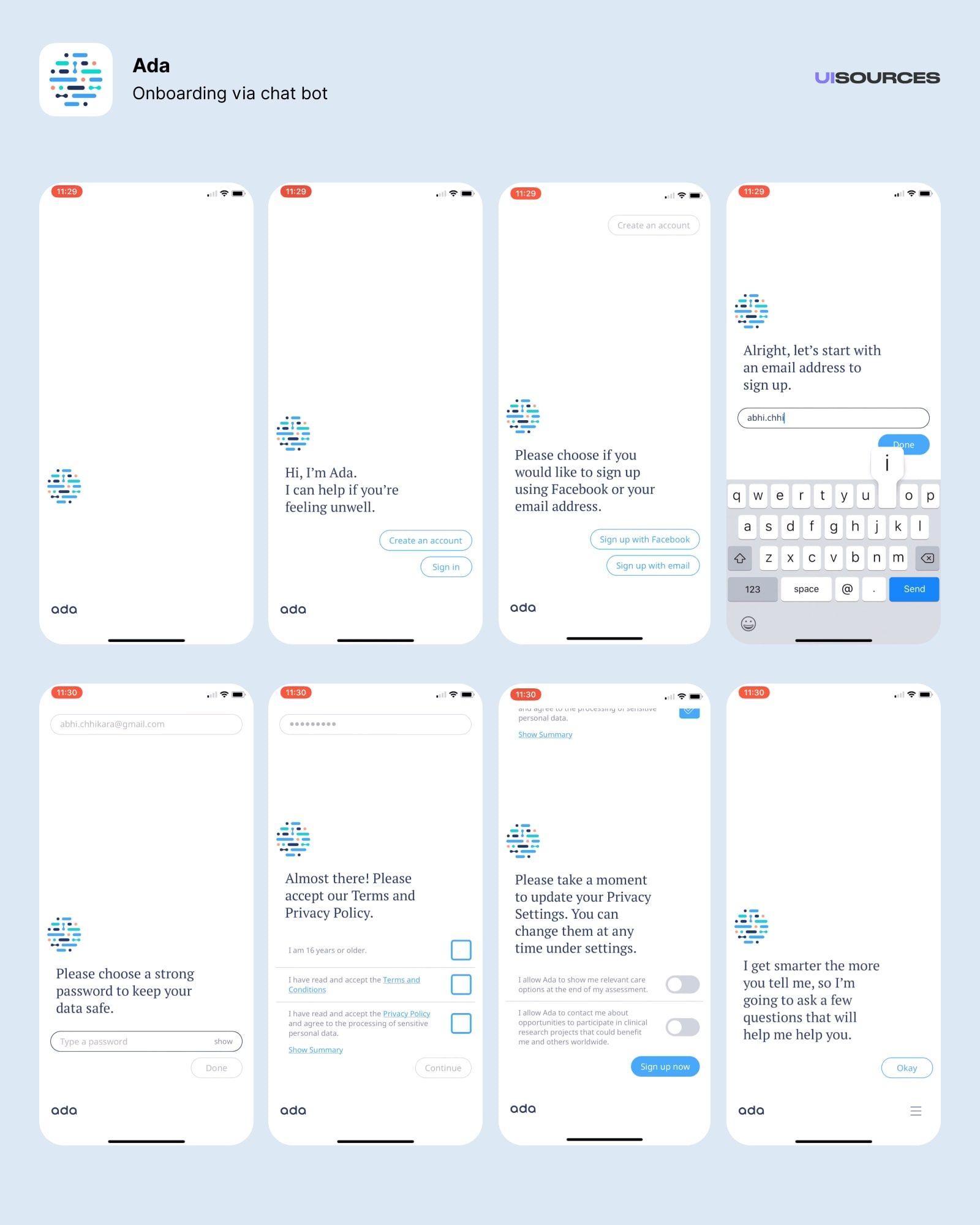
Intercom
Intercom is a customer support tool with an AI-powered chatbot, Resolution Bot. Intercom's chatbot gives users predictive responses to explain their queries better and find answers as quickly as possible. Teams can train the bot with minimal effort and automate large parts of their self-serve support. You can customize responses based on the type of user—paid or unpaid, business type, and more.
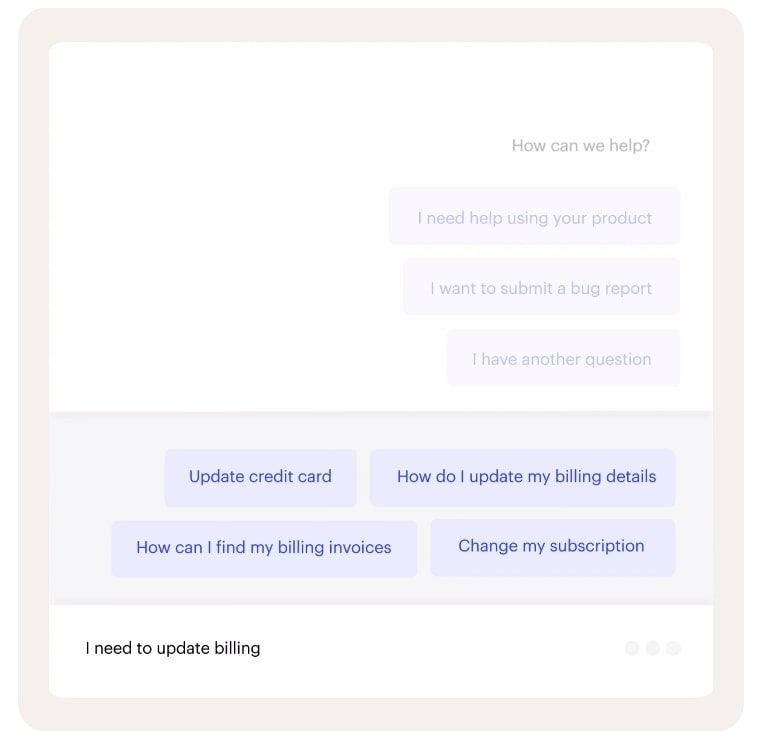
In-app and website help
In-app and website support resolve any problems right where customers need help. Instead of switching between different channels to find answers, users can immediately click on the help widget and solve their queries.
In-app support tools integrate your knowledge base or help center into different sections of your site or app to answer questions at a faster pace.
Stonly
Stonly enables you to offer adaptive guidance to customers anywhere and anytime. This means you can produce in-app walkthroughs to explain different product capabilities, anticipate questions, create on-demand troubleshooting resources, and guide new customers. You can also personalize help content based on the page or section of the app the customer is using.
Stonly can also create banners or pop-ups to spotlight important announcements on your site or app. What's more, the powerful analytics on the platform help measure the ROI for your self-serve support content.
Stonly provides in-app guidance for on-demand query resolution without leaving the app or site
Contact forms
Contact forms are an underrated aspect of excellent self-service solutions. When users can't find the answers they're looking for in your help center, contact forms give them an option to connect with a support agent and resolve their query.
But creating a contact form isn't as easy as it sounds. A lousy contact form can miss out on crucial details or frustrate customers.
Conversely, a good contact form tells your agents the issue a customer is struggling with and gives customers the confidence to get a quick response.
Stonly
Stonly offers user-friendly contact forms to collect, organize, and analyze customer queries effortlessly. These forms come with a responsive design—so they look good on every device and interface. Stonly’s forms enable an excellent handoff from self-service to live support.
You don't need any coding skills to design and use these forms. Stonly's no-code editor makes creating a multi-step form easy. The best part is that you can use conditional logic to qualify and route every query to suitable agents.
In essence, your customers get a hassle-free way to register their concerns and reach your team. You get access to rich data, a robust qualification process, and ease of use for your team.
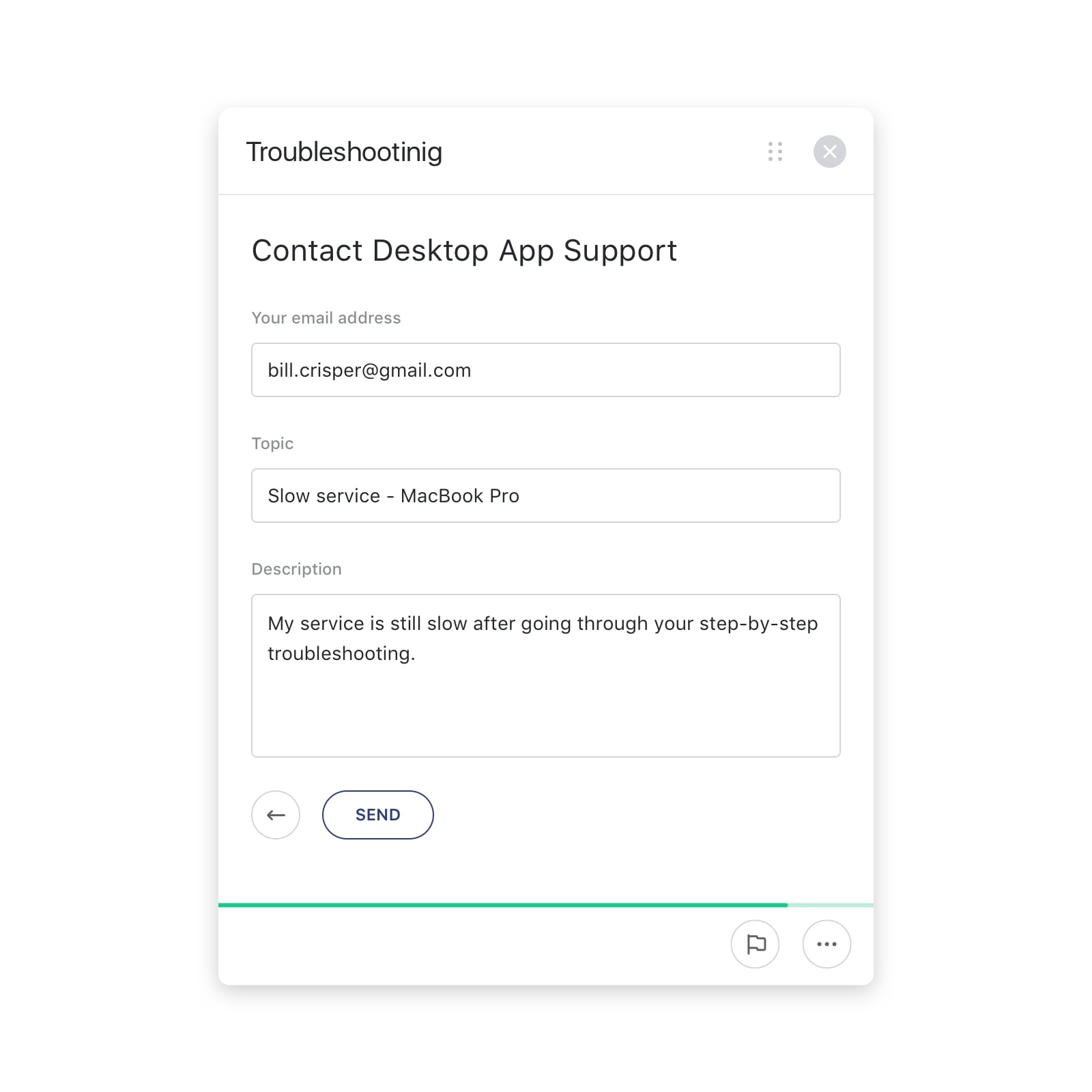
4 benefits of using customer self-service portals
A customer self-service tool might seem like a nice-to-have when you're building the foundations of your brand. But as your business scales and the customer base grows, a self-serve channel becomes necessary to deliver a seamless user experience and save your customer service team from too much work.
Let’s break down the four most prominent reasons behind the benefits of using customer self-service tools.
1. Delivers proactive customer support for speedier resolutions
Self-service channels significantly improve the time to resolution because customers don't have to rely on an agent to solve their queries. They can directly jump to your knowledge base or help center to find the information they were looking for—whether it's at 2 am or in the middle of the day.
2. Offers a cost-effective solution to scale customer support without lower CSAT
Most people downplay the benefits of self-serve solutions by thinking that the lack of human support creates a bad user experience.
However, your self-service portal can be a game changer for your business if you focus more on creating meaningful resources instead of automating the process. That way, self-service can reduce overall support costs without compromising the CSAT levels.
3. Opens up the team to focus on more complex customer issues and build customer relationships
A self-service portal reduces ticket volume to free up your team for more high-value queries. Instead of answering repetitive questions throughout the day, your support agents can work more productively and tend to more complex queries.
This is a win-win since you can resolve all types of concerns and questions. While the self-serve portal answers the more straightforward questions, support agents can provide tailored solutions.
4. Supercharges your full service with deep insights
One of the most significant benefits of self-serve tools is the insights and analytics they collect to serve as knowledge management vaults. This data predicts customer behavior to help with product improvements, content updates, and training enhancements for agents.
More importantly, collecting this data means when a customer connects with a support executive, the agent already has some context about the solutions they’ve already tried. This qualification minimizes friction in the customer experience.
Improve your self-serve support experience with Stonly
Self-service tools result in a more satisfying experience for both customers and support teams. The only tricky part is finding an ideal tool to do the job for your business.
Thankfully, you don't have to look that far. With Stonly's multifaceted self-support features, you can create a power-packed self-serve setup in no time. This all-in-one tool allows you to create interactive content with a no-code editor, improve accessibility with site-wide widgets, and personalize self-support through unique content paths.
Bring your support team on a single interface and deliver a more consistent customer service experience using Stonly.
Want to introduce self-serve support to ease your team’s workload? Try Stonly and tackle all your challenges.
Get a demo
Frequently asked questions about customer self-service software
What is customer self-service?
Customer self-service defines the idea that customers find answers to any questions themselves. Teams can document all relevant information for customers to solve their problems whenever needed quickly.
What is customer self-service software?
Customer self-service software is a platform designed to give users and customers easy access to any information related to a business. This software removes the need to reach out to reps and can directly resolve their queries through a self-service portal.
What software do customer service representatives use?
Customer service representatives use different types of software to answer customer queries. This includes self-service software, ticketing management tools, reporting and analytics tools, and more such software.
What is the main difference between self-service customer service and traditional customer service?
Traditional customer service follows the approach where customers reach out to support agents to resolve queries. The self-service method replaces the need to contact human representatives with properly documented knowledge available online.

